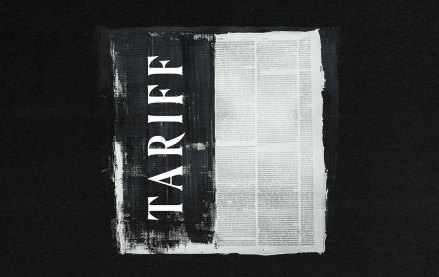Register by Jan 13 to save on passes and connect with marketers from Uber, Bose and more
‘Mailboxes crowded’: How DTC brand Parachute is looking to stand out with ‘whimsical’ brand imagery as more brands diversify with direct mail

As direct-to-consumer brands continue to diversify their advertising mix to be less reliant on Facebook and Instagram, the channels they use to do so are becoming more and more crowded. That’s why some brands are focused on finding ways to stand out with direct mail, podcasts, out-of-home and more.
Parachute, the DTC bedding and lifestyle brand, aimed to do just that with its recent catalog cover featuring a woman repotting plants in her bedroom with dirt all over her bedroom carpet. The image was meant to be a “less literal and more whimsical” approach to the Parachute’s catalog cover to help the brand stand out as mailboxes have gotten more crowded with brand catalogs, explained founder Ariel Kaye, adding that the brand expected to be a conversation starter.
“We’ve been investing in catalogs for a number of years now,” said Kaye. Parachute has been diversifying its ad mix with direct mail since at least 2018. “We’ve noticed over the past six, maybe nine months there’s been an increase in catalog circulation for a number of brands. It has really made the mailboxes crowded.”
With mailboxes increasingly crowded as more DTC brands diversify their advertising mix and many of those brands being lifestyle or home goods brands, Parachute’s 14-person in-house marketing team had internal conversations about finding a way to stick out, explained Foujan Volk, vp of brand and marketing.
“If we want to be this lifestyle brand — that is the goal — and build awareness in a more meaningful way, then how do we make it so that if we’re one of the 12 [catalogs in someone’s mailbox to make sure] we’re getting the eyeballs?” questioned Volk. “We have to pique interest to get them to open the book.”
Direct marketing — i.e. email, direct mail and audio advertising — accounts for roughly 12% of Parachute’s marketing budget. The rest of the ad budget is dedicated to Facebook, Instagram, ads on streaming platforms, affiliate marketing as well as newer channels like TikTok. It’s unclear how the budget is divided as Parachute did not share those figures. Per Kantar, Parachute spent $21.9 million on media in 2021, up from $2.6 million in 2020. Those figures do not include social media spending as Kantar doesn’t track social spending.
Finding ways to stand out among the many DTC brands diversifying their advertising via the mailbox is crucial for brands as channels get more crowded, explained Allen Adamson, brand consultant and co-founder of Metaforce. “You have to be disruptive rather than formulaic,” said Adamson, adding that home goods brands tend to depict home as a perfectly manicured nirvana. “If you’re not getting buzz on social — negative or positive — no one is noticing you. You have to be disruptive and accept some static, at least you’re getting noticed.”
Going forward, Parachute is looking to continue to diversify its marketing mix testing out a brand ambassador program and TikTok as well as telling “compelling stories” with its advertising and marketing, noted Kaye. “Telling a story keeps the conversation going.”
More in Marketing

What does media spend look like for 2026? It could be worse — and it might be
Forecasts for 2026 media spend range from 6.6% on the lower end to over 10% but the primary beneficiaries will be commerce, social and search.

Pitch deck: How Amazon is emerging as the proof layer for TV spend
Amazon is positioning itself to advertisers as the “first-stop shop” for planning, buying, optimizing and measuring TV.

Here are the 2025 brand winners and losers of tariffs
Tariffs completely upended the retail industry in 2025 — and no company was left unscathed.








